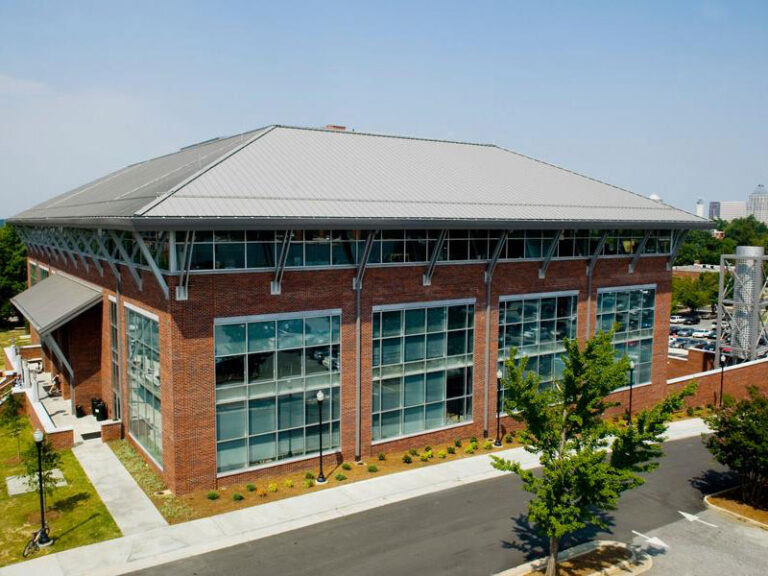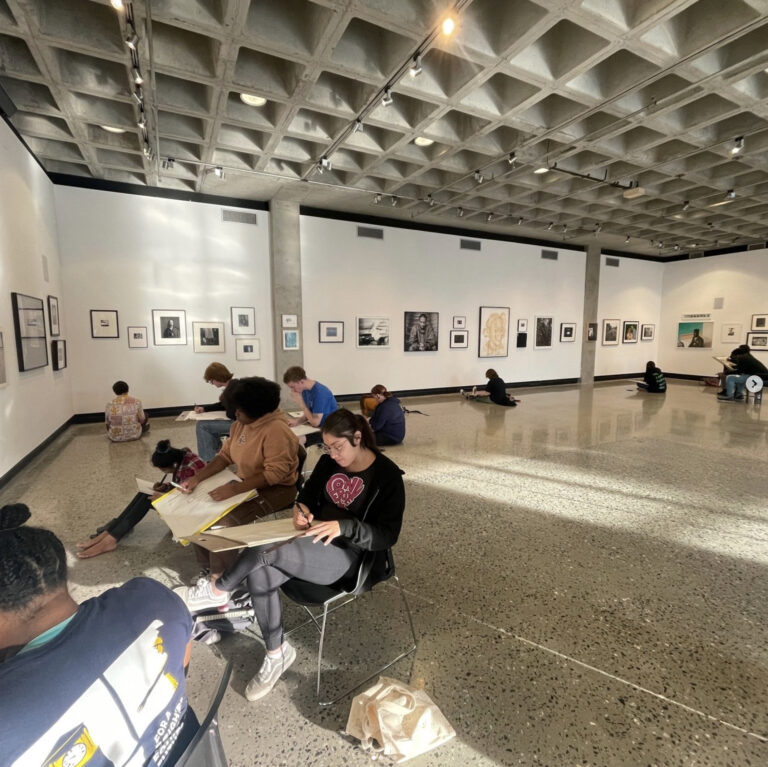Community Group Visits
Free guided gallery visits for community members of all ages can be requested for a minimum of 6 and a maximum of 30 people. Our galleries fill quickly with visits and programs. To ensure your group has space for an enjoyable visit, please let us know when you’d like to come by filling out the visit form. All scheduled visits begin with a short welcome and orientation to the museum.
UNCG Academic Visits
The Weatherspoon supports UNCG academic classes from all disciplines. Our academic programming team works with faculty members to design museum-based sessions as well as asynchronous assignments that center course content and support learning outcomes. Our team members can serve as the leads for class visits, but we also support faculty members in teaching on their own in the galleries.
Regardless of structure, we ask that all faculty members seeking academic visits, guided or self-guided, submit a scheduling request. The museum serves thousands of students each semester, and reservations ensure that each group gets adequate time and space.
Space for Engagement
In the Space for Engagement, you’ll find drop-in activities and a venue for teaching and study, informal and scheduled meetings, community conversation, and personal reflection. The space’s regularly changing art installations are curated in collaboration with UNC Greensboro faculty. This space is open during regular museum hours, but you can also reserve it for a class or meeting.
CoWAM Students' Club
Current students interested in art and museums are encouraged to join this student-led organization at the Weatherspoon and support its mission to connect students socially, academically, and professionally through peer-activated programming. No background in the arts is required to participate. Follow CoWAM on Instagram @Co_WAM, Spartan Connect, or contact the museum to find out more at weatherspoon@uncg.edu.
VISUAL ARTS AT UNC GREENSBORO
The UNCG School of Art, located a short walk from WAM in the Maud Gatewood Studio Arts Building, features classrooms, studios, and the Gatewood Gallery—an exhibition space for visiting artists, UNCG students, and faculty.
The UNCG School of Art is dedicated to helping transform the student’s passion for creativity and the visual arts into a professional and personal life centered on the arts. They offer several degree paths designed to help the student accomplish this, combining intensive and rigorous curricula with practical experiences to unlock creativity and prepare the student for a multitude of career possibilities.
UNCG is an accredited institutional member of the National Association of Schools of Art and Design (NASAD).
COLLEGE OF VISUAL & PERFORMING ARTS (CVPA)
The College of Visual and Performing Arts (CVPA)
at UNC Greensboro consists of four schools—Art, Dance, Music, and Theatre—and a new BA program in Arts Administration. Each discipline offers an impressive variety of programs and nationally accredited degrees.
Comprised of the largest and most comprehensive set of arts programs in the UNC System, UNC Greensboro’s CVPA is a premier institution for the visual and performing arts. The UNC System Board of Governors has designated CVPA as an “area of distinction.” CVPA transforms lives by providing exceptional artistic and academic experiences.


GATEWOOD GALLERY
The 99,000 square foot Maud Gatewood Studio Arts Center (STAC) was designed by architectural firms Hays, Seay, Mattern and Mattern and by Centerbook at a cost of $17.6 million. Two monumental sculptures by faculty members Andy Dunnill and Billy Lee flank its front entrance. The Gatewood building houses the School of Art and the Interior Architecture Department. The School of Art is located on the first three floors in the Gatewood Studio Arts Center.
GREENSBORO PROJECT SPACE (GPS)
Created by the School of Art at UNC Greensboro, GPS is an off-campus contemporary art center that serves both the university and community. GPS acts as a space for students to have critical dialogue that engages with people and issues outside of our university. Visiting artists and students themselves are encouraged to use the off-campus location as a catalyst for expansive and sustained interactions with a diverse set of local communities.
